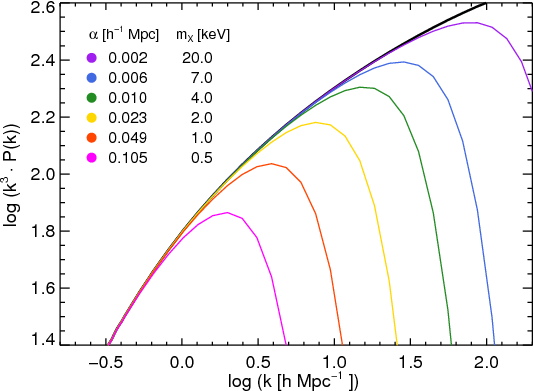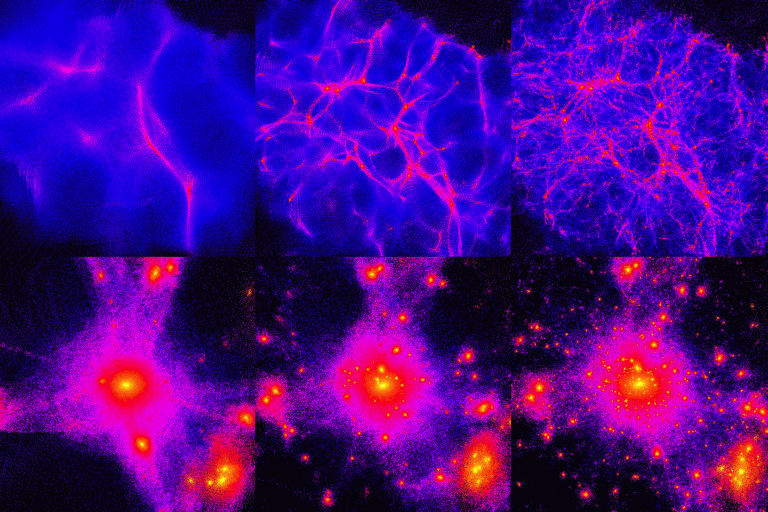Forms of Dark Matter
First, remember we have demonstrated that dark matter must be
non-baryonic! Many possibilities for dark matter, some known
(neutrinos), many more hypothesized (WIMPS, axions) but never detected.
In very early universe, all particles are in thermal equilibrium such
that 3kT ~ mv2. As the temperature of the universe drops,
particles decouple from the radiation field (aka "freeze-out").
We classify dark matter models by their velocities at this time of
decoupling: lighter particles are moving faster.
Hot
Dark Matter: low mass particles which decouple early and are
moving at
relativistic speed (i.e., massive neutrinos, masses of few eV)
Cold Dark Matter:
particles which decouple later: more massive,
non-relativistic speeds (i.e., WIMPS, axions, masses of GeV)
How does this affect structure?
Hot dark matter models
Dark matter particles decouple early, can free-stream away from small,
low mass density fluctuations. This free-streaming mass is roughly

Structures less massive than this will be erased. More massive
structures survive, but are at lower density amplitudes and will take
longer to collapse.
Zeldovich (1970) pancakes: Since
perturbations aren't spherical, the collapse is non-radial, occuring on
the shortest axis first. This results in very massive, slowly
collapsing flattened structures of supercluster scales. As they slowly
collapse, that collapse can cause fragmentation and collapse on
progressively smaller scales.
Top down structure formation:
superclusters form first, then cluster-sized objects, then galaxies.
This does not work!
Cold Dark matter models
Dark matter particles decouple much later, move slower.
Fluctuations on
all scales are preserved and can collapse. Low mass structures are
denser and will collapse faster. High mass structures are less dense,
collapse later.
Bottom up (hierarchical) structure formation:
galaxies form first, then groups, then clusters.
Much more like what we see!
Of course, many models exist in between pure hot and pure cold: Warm
dark matter models depend on the mass of the DM particle, and so the
power spectrum of fluctuations gets cut off at different mass scales:

from Kennedy+ 2014
Simulations of Hot/Warm/Cold dark matter universes (courtesy ITC @
University of Zurich):
Top row: Simulations of what structure in Hot (left), Warm
(middle), and Cold (Right) dark matter universes would look like at
high redshift (early times).
Bottom row: same as top row, except now as they would look at the
present time (z=0).



